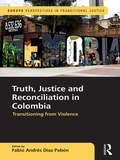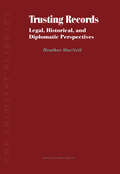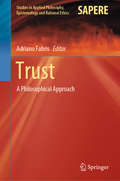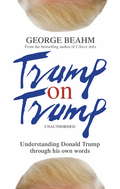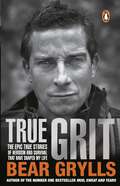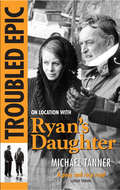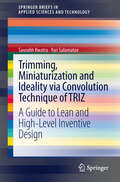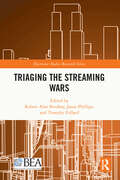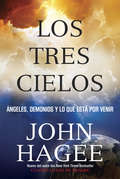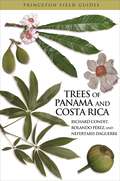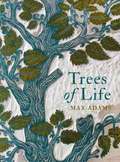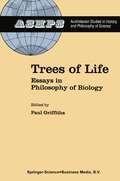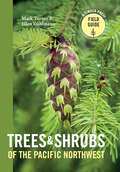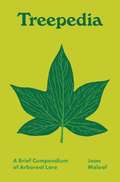- Table View
- List View
Truth, Justice and Reconciliation in Colombia: Transitioning from Violence (Europa Perspectives in Transitional Justice)
by Díaz Pabón Fabio AndrésThe signing of the peace agreements between the FARC-EP and the Colombian Government in late November 2016 has generated new prospects for peace in Colombia, opening the possibility of redressing the harm inflicted on Colombians by Colombians. Talking about peace and transitional justice requires us to think about how to operationalize peace agreements to promote justice and coexistence for peace. This volume brings together reflections by Colombian academics and practitioners alongside pieces provided by researchers and practitioners in other countries where transitional justice initiatives have taken place (Bosnia and Herzegovina, South Africa, Sri Lanka and Peru). This volume has been written in the south, by the south, for the south. The book engages with the challenges ahead for the coming generations of Colombians. Rivers of ink have dealt with the end goals of transitional justice, but victims require us to take the quest for human rights beyond the normative realm of theorizing justice and into the practical realm of engaging how to implement justice initiatives. The tension between theory—the legislative frameworks guaranteeing human rights—and practice—the realization of these ideas—will frame Colombia’s success (or failure) in consolidating the implementation of the peace agreements with the FARC-EP.
Truth, Justice and Reconciliation in Colombia: Transitioning from Violence (Europa Perspectives in Transitional Justice)
by Fabio Andres Diaz PabonThe signing of the peace agreements between the FARC-EP and the Colombian Government in late November 2016 has generated new prospects for peace in Colombia, opening the possibility of redressing the harm inflicted on Colombians by Colombians. Talking about peace and transitional justice requires us to think about how to operationalize peace agreements to promote justice and coexistence for peace. This volume brings together reflections by Colombian academics and practitioners alongside pieces provided by researchers and practitioners in other countries where transitional justice initiatives have taken place (Bosnia and Herzegovina, South Africa, Sri Lanka and Peru). This volume has been written in the south, by the south, for the south. The book engages with the challenges ahead for the coming generations of Colombians. Rivers of ink have dealt with the end goals of transitional justice, but victims require us to take the quest for human rights beyond the normative realm of theorizing justice and into the practical realm of engaging how to implement justice initiatives. The tension between theory—the legislative frameworks guaranteeing human rights—and practice—the realization of these ideas—will frame Colombia’s success (or failure) in consolidating the implementation of the peace agreements with the FARC-EP.
Truth in Fiction: Rethinking its Logic (Synthese Library #391)
by John WoodsThis monograph examines truth in fiction by applying the techniques of a naturalized logic of human cognitive practices. The author structures his project around two focal questions. What would it take to write a book about truth in literary discourse with reasonable promise of getting it right? What would it take to write a book about truth in fiction as true to the facts of lived literary experience as objectivity allows?It is argued that the most semantically distinctive feature of the sentences of fiction is that they areunambiguously true and false together. It is true that Sherlock Holmes lived at 221B Baker Street and also concurrently false that he did. A second distinctive feature of fiction is that the reader at large knows of this inconsistency and isn’t in the least cognitively molested by it. Why, it is asked, would this be so? What would explain it?Two answers are developed. According to the no-contradiction thesis, the semantically tangled sentences of fiction are indeed logically inconsistent but not logically contradictory. According to the no-bother thesis, if the inconsistencies of fiction were contradictory, a properly contrived logic for the rational management of inconsistency would explain why readers at large are not thrown off cognitive stride by their embrace of those contradictions. As developed here, the account of fiction suggests the presence of an underlying three - or four-valued dialethic logic. The author shows this to be a mistaken impression. There are only two truth-values in his logic of fiction.The naturalized logic of Truth in Fiction jettisons some of the standard assumptions and analytical tools of contemporary philosophy, chiefly because the neurotypical linguistic and cognitive behaviour of humanity at large is at variance with them. Using the resources of a causal response epistemology in tandem with the naturalized logic, the theory produced here is data-driven, empirically sensitive, and open to a circumspect collaboration with the empirical sciences of language and cognition.
Truth and Its Nature (Synthese Library #284)
by Jaroslay PeregrinThe question how to turn the principles implicitly governing the concept of truth into an explicit definition (or explication) of the concept hence coalesced with the question how to get a finite grip on the infinity of T-sentences. Tarski's famous and ingenious move was to introduce a new concept, satisfaction, which could be, on the one hand, recursively defined, and which, on the other hand, straightforwardly yielded an explication of truth. A surprising 'by-product' of Tarski's effort to bring truth under control was the breathtaking finding that truth is in a precisely defined sense ineffable, that no non trivial language can contain a truth-predicate which would be adequate for the very 4 language . This implied that truth (and consequently semantic concepts to which truth appeared to be reducible) proved itself to be strangely 'language-dependent': we can have a concept of truth-in-L for any language L, but we cannot have a concept of truth applicable to every language. In a sense, this means, as Quine (1969, p. 68) put it, that truth belongs to "transcendental metaphysics", and Tarski's 'scientific' investigations seem to lead us back towards a surprising proximity of some more traditional philosophical views on truth. 3. TARSKI'S THEORY AS A PARADIGM So far Tarski himself. Subsequent philosophers then had to find out what his considerations of the concept of truth really mean and what are their consequences; and this now seems to be an almost interminable task.
Trusting Records: Legal, Historical and Diplomatic Perspectives (The Archivist's Library #1)
by H. MacNeilA trustworthy record is one that is both an accurate statement of facts and a genuine manifestation of those facts. Record trustworthiness thus has two qualitative dimensions: reliability and authenticity. Reliability means that the record is capable of standing for the facts to which it attests, while authenticity means that the record is what it claims to be. This study explores the evolution of the principles and methods for determining record trustworthiness from antiquity to the digital age, and from the perspectives of law and history. It also examines recent efforts undertaken by researchers in the field of archival science to develop methods for ensuring the trustworthiness of records created and maintained in electronic systems. Audience: The target audience for this study is legal scholars working in the field of evidence law, historians working in the field of historical methodology, and recordkeeping professionals (records managers, information technology specialists, archivists) working on the design and implementation of contemporary organizational recordkeeping systems.
Trust: A Philosophical Approach (Studies in Applied Philosophy, Epistemology and Rational Ethics #54)
by Adriano FabrisThis book presents cutting-edge concepts on the question of trust. Written by leading experts, it investigates a paradoxical feature of contemporary society: while information and communication technologies, on the one hand, and scientific discourses, on the other, can promote more informed participation in public and democratic life, they have also led to a dramatic decline in our communicative and cooperative skills. The book analyzes the notion of trust from an interdisciplinary perspective by combining the normative (continental) and empirical (Anglo-American) approaches and by considering the political, epistemological, and historical transformations in the interpersonal relationships sparked by new technologies. Using trust as a model, it then investigates and clarifies the new types of participation that are made possible by scientific and technological advances.
Trump on Trump
by George BeahmOne thing you cannot deny about Donald Trump is that he speaks his mind... and the results are fascinating!Get to know how that mind works by reading his words. This is an unbiased collection of Trump's most famous and interesting quotes and thus an unofficial guide to his thinking.Brash, outspoken and successful, Donald Trump is a political phenomenon. Some of his more contentious comments have outraged the immigrant community, feminist groups and even the Pope. Whether you like him or loathe him, he's impossible to ignore.Now you can understand more about this most infamous public figure and form your own opinion about the way he thinks. Covering the time since Trump announced that he was running for Republican candidacy, this book looks at excerpts and speeches and puts them into context. Among many topics it covers his views on business, America and other countries; his opinion of himself, women and those who stand, or have stood, against him.This is a fascinating insight into the world's most controversial politician.
Trueman Bradley - Aspie Detective
by Alexei Maxim RussellTrueman Bradley comes to New York City to fulfil his dream. When he is told a guy with Asperger's Syndrome could never be a successful private detective, he uses his talent for mathematics and, with the help of new friends and some amazing inventions, sets out to prove to everyone that he has the makings of a world class detective.
True Grit: The Epic True Stories Of Survival And Heroism That Have Shaped My Life
by Bear GryllsBear Grylls knows what it takes to survive. But he’s not the first. Take the American bombardier Louis Zamperini, who survived 47 days stranded at sea by catching and killing hungry sharks and drinking the warm blood of albatrosses — only to be captured by the Japanese and horrifically tortured for years in their most brutal POW camps… Or Marcus Luttrell, a Navy SEAL who single-handedly took on a Taliban regiment before dragging his bleeding, bullet-ridden body for days through the harsh mountains of Afghanistan… Or Nando Parrado, one of the survivors of a horrific air-crash high in the ice-bound Andes, who only lived because he was willing to eat the flesh of his dead companions… In this gripping new book, Bear tells the stories of the adventurers, explorers, soldiers and spies whose refusal to quit in the most extreme situations has inspired him throughout his life. Some of them make uncomfortable reading – survival is rarely pretty. But all of them are tales of eye-watering bravery, death-defying resilience and extraordinary mental toughness by men and women who have one thing in common: true grit.
Trout in Dirty Places: 50 rivers to fly-fish for trout and grayling in the UK's towns and city centres
by Theo PikeHere is a guide to the most revolutionary development in British angling for many years: fly-fishing for trout and grayling in the very centre of towns and cities throughout the United Kingdom. From Sheffield to South London, from Merthyr Tydfil to Edinburgh, this is the cutting edge of 21st century fishing. Nothing is more surreal yet exhilarating than casting a fly for iconic clean-water species in the historic surroundings of our most damaged riverscapes – centres of post-industrial decay, but now also of rediscovery and regeneration. * fishing-focused profiles of 50 selected streams * interviews with local conservationists dedicated to restoring the urban rivers * local flies and emerging traditions, and * details of how to get involved and support this restoration work. This book guides readers towards relaxing, good-value fishing on their own doorsteps as a viable alternative to more costly (and carbon-intensive) destination angling: a positive lifestyle choice in challenging moral and economic times. No one author or publisher has yet attempted to bring this emerging trend of urban flyfishing into a single, epoch-making volume.
Troubled Epic: Troubled Epic
by Michael TannerRyan's Daughter, winner of two Oscars, was a very successful film that lured Michael Tanner to the Dingle Peninsula. He researched this story by focusing on identifying locations and interviewing local people involved in the film's shoot. The result is an unvarnished account of the troubled shooting of the film, both on and off camera, and how its stars - Robert Mitchum, Sarah Miles, Trevor Howard, Christopher Jones and John Mills - coped with a year on Ireland's west coast in 1969. The story is largely told in the words of local people who were drivers, extras, prop men, landladies, actors or mere observers. Also included is a gazetteer to the locations used on the Dingle Peninsula and elsewhere in Kerry to enable fans to follow in Rosy Ryan's footsteps. With pictures and archive material, much never published before, this is the behind-the-scenes story of a film which changed the Dingle Peninsula overnight, saw more antics than usual by stars off and on set, and resulted in David Lean making no film for 14 years.
Trimming, Miniaturization and Ideality via Convolution Technique of TRIZ: A Guide to Lean and High-level Inventive Design (SpringerBriefs in Applied Sciences and Technology)
by Saurabh Kwatra Yuri SalamatovThe book is a valuable research tool-kit for innovators, amateur & professionals alike. Additionally, College & University faculties on Engineering, who organize yearly workshops internationally will find hundreds of novel themes to choose from. Some teachers might just secretly buy this book to introduce out-of-box brain-teasers in classroom to add fizz to normal (at times boring) lecturing. The book can be used as main/add-on textbook towards following courses: (1) Master's degree programs on design innovation worldwide and (2) Senior undergraduate courses in industrial, engineering & product design.
Trigonometry For Dummies
by Mary Jane SterlingMake trigonometry as easy as 1-2-3 Believe it or not, trigonometry is easier than it looks! With the right help, you can breeze through your next trig class, test, or exam and be ready for your next math challenge. In Trigonometry For Dummies, you’ll learn to understand the basics of sines, cosines, and tangents, graph functions, solve tough formulas, and even discover how to use trig outside the classroom in some cool and interesting ways. Ditch the confusing jargon and take a plain-English tour of one of the most useful disciplines in math. In this lifesaving guide, you’ll learn how to: Graph trig functions, including sine, cosine, tangent, and cotangent functions Understand inverse trig functions and solve trig equations Relate triangles to circular functions and get a handle on basic identitiesSo, whether you’re looking for an easy-to-use study guide, to boost your math grade, or get a refresher on some basic trig concepts after a long absence from studying, Trigonometry For Dummies is your ticket to understanding the mathematical mysteries of the triangle.
Trigonometry For Dummies
by Mary Jane SterlingMake trigonometry as easy as 1-2-3 Believe it or not, trigonometry is easier than it looks! With the right help, you can breeze through your next trig class, test, or exam and be ready for your next math challenge. In Trigonometry For Dummies, you’ll learn to understand the basics of sines, cosines, and tangents, graph functions, solve tough formulas, and even discover how to use trig outside the classroom in some cool and interesting ways. Ditch the confusing jargon and take a plain-English tour of one of the most useful disciplines in math. In this lifesaving guide, you’ll learn how to: Graph trig functions, including sine, cosine, tangent, and cotangent functions Understand inverse trig functions and solve trig equations Relate triangles to circular functions and get a handle on basic identitiesSo, whether you’re looking for an easy-to-use study guide, to boost your math grade, or get a refresher on some basic trig concepts after a long absence from studying, Trigonometry For Dummies is your ticket to understanding the mathematical mysteries of the triangle.
Trials of the Century [2 volumes]: An Encyclopedia of Popular Culture and the Law [2 volumes]
by Scott P. JohnsonThis comprehensive set of essays documents the most important criminal, civil, and political trials in the United States from colonial times to the present, examining their impact on both legal history and popular culture.Crime and punishment are of perennial interest across the human species. Trials of the Century: An Encyclopedia of Popular Culture and the Law examines some of the most important (and infamous) cases in American history, placing them in both historical and legal context. Among the landmark cases considered in these two volumes are the 1692 Salem Witch Trials, the Scopes "Monkey" Trial, and the O.J. Simpson murder trial. A number of civil lawsuits and political trials are also included, such as the impeachment trials of Presidents Andrew Johnson and William Jefferson Clinton.Entries in the encyclopedia detail the events leading to each trial and introduce the key players, with a focus on judges, lawyers, witnesses, defendants, victims, media, and the public. In addition, the aftermath of the trial and its impact are analyzed from a scholarly, yet straightforward, perspective, emphasizing how the trial affected the law and society at large.
Triaging the Streaming Wars (ISSN)
by Robert Alan Brookey Jason Phillips Timothy PollardThis volume considers the different implications of the rise of streaming services and their particular acceleration during the COVID-19 pandemic. Exploring the significant disruption caused to the entertainment industries by the rise of these streaming services, a team of international scholars examine changes to labor issues and compensation, which were central to the conflict between the Writers Guild of America members and their agents, the broadening divide between networks and affiliates, the significant consolidation of the media industry resulting from Disney’s acquisition of Fox ahead of the launch of Disney+, and the variety of business models behind these services that defy the traditional advertising models and standard revenue streams. This thorough and multifaceted look at this rapidly growing section of the entertainment industry will be of interest to academics and students working in film and TV studies, media industry studies, digital media studies, business, and communication studies.
Triaging the Streaming Wars (ISSN)
This volume considers the different implications of the rise of streaming services and their particular acceleration during the COVID-19 pandemic. Exploring the significant disruption caused to the entertainment industries by the rise of these streaming services, a team of international scholars examine changes to labor issues and compensation, which were central to the conflict between the Writers Guild of America members and their agents, the broadening divide between networks and affiliates, the significant consolidation of the media industry resulting from Disney’s acquisition of Fox ahead of the launch of Disney+, and the variety of business models behind these services that defy the traditional advertising models and standard revenue streams. This thorough and multifaceted look at this rapidly growing section of the entertainment industry will be of interest to academics and students working in film and TV studies, media industry studies, digital media studies, business, and communication studies.
Los Tres Cielos: Ángeles, Demonios Y Lo Que Está Por Venir
by John HageeA medida que las ventas del actual best-seller de Hagee en el New York Times, "Cuatro lunas de sangre," continúan aumentando, cientos de miles de lectores que quieren saber lo que vendrá al final de este mundo... el cielo mismo. 'Le sorprenderÃa saber que la Biblia habla de tres cielos diferentes, no solo uno? Y a medida que el final se acerca, quizás sea hora de que empieces a pensar en las cosas sorprendentes que se avecinan. El poder de los medios de comunicación nacionales de Hagee asegura otro mega bestseller.As sales of Hagee's current New York Times bestseller, Four Blood Moons, continue to soar, hundreds of thousands of readers have had their thirst whetted to know what is to come at the end of this world. . . heaven itself! Hagee's national media power assures another mega-bestseller.
Trees of Panama and Costa Rica
by Richard Condit Rolando Pérez Nefertaris DaguerreThis is the first field guide dedicated to the diverse tree species of Panama and Costa Rica. Featuring close to 500 tropical tree species, Trees of Panama and Costa Rica includes superb color photos, abundant color distribution maps, and concise descriptions of key characteristics, making this guide readily accessible to botanists, biologists, and casual nature lovers alike. The invaluable introductory chapters discuss tree diversity in Central America and the basics of tree identification. Family and species accounts are treated alphabetically and describe family size, number of genera and species, floral characteristics, and relative abundance. Color distribution maps supplement the useful species descriptions, and facing-page photographic plates detail bark, leaf, flower, or fruit of the species featured. Helpful appendices contain a full glossary, a comprehensive guide to leaf forms, and a list of families not covered. The only tree guide to cover both Panama and Costa Rica together Covers almost 500 species 438 high-resolution color photos 480 color distribution maps and two general maps Concise and jargon-free descriptions of key characteristics for every species Full glossary and guide to leaf forms included
Trees of Panama and Costa Rica
by Richard Condit Rolando Pérez Nefertaris DaguerreThis is the first field guide dedicated to the diverse tree species of Panama and Costa Rica. Featuring close to 500 tropical tree species, Trees of Panama and Costa Rica includes superb color photos, abundant color distribution maps, and concise descriptions of key characteristics, making this guide readily accessible to botanists, biologists, and casual nature lovers alike. The invaluable introductory chapters discuss tree diversity in Central America and the basics of tree identification. Family and species accounts are treated alphabetically and describe family size, number of genera and species, floral characteristics, and relative abundance. Color distribution maps supplement the useful species descriptions, and facing-page photographic plates detail bark, leaf, flower, or fruit of the species featured. Helpful appendices contain a full glossary, a comprehensive guide to leaf forms, and a list of families not covered. The only tree guide to cover both Panama and Costa Rica together Covers almost 500 species 438 high-resolution color photos 480 color distribution maps and two general maps Concise and jargon-free descriptions of key characteristics for every species Full glossary and guide to leaf forms included
Trees of Life
by Max AdamsAn informative, richly illustrated book about eighty of the world’s most important and remarkable treesOur planet is home to some three trillion trees—roughly four hundred for every person on Earth. In Trees of Life, Max Adams selects, from sixty thousand extant species, eighty remarkable trees through which to celebrate the richness of humanity’s relationship with trees, woods, and forests.In a sequence of informative and beautifully illustrated portraits, divided between six thematic sections, Adams investigates the trees that human cultures have found most useful across the world and ages: trees that yield timber and other materials of immense practical value, trees that bear edible fruits and nuts, trees that deliver special culinary ingredients and traditions, and trees that give us dyes, essences, and medicines. In a section titled “Supertrees,” Adams considers trees that have played a pivotal role in maintaining natural and social communities, while a final section, “Trees for the Planet,” looks at a group of trees so valuable to humanity that they must be protected at all costs from loss.From the apple to the oak, the logwood to the breadfruit, and the paper mulberry to the Dahurian larch, these are trees that offer not merely shelter, timber, and fuel but also drugs, foods, and fibers. Trees of Life presents a plethora of fascinating stories about them.
Trees of Life: Essays in Philosophy of Biology (Studies in History and Philosophy of Science #11)
by PaulGriffithsAustralia and New Zealand boast an active community of scholars working in the field of history, philosophy and social studies of science. • Australasian Studies in History and Philosophy of Science' aims to provide a distinctive publication outlet for their work. Each volume comprises a group of essays on a connected theme, edited by an Australian or a New Zealander with special expertise in that particular area .. In each volume, a majority of the contributors is from Australia or New Zealand. O;mtributions from elsewhere are by no means ruled out, however, and are indeed actively encouraged wherever appropriate to the balance of the volume in question. Earlier volumes in the series have been welcomed for significantly advancing the discussion of the topics they have dealt with. The present volume will I believe be greeted equally enthusiastically by readers in many parts of the world. R. W. Home General Editor Australasian Studies in History and Philosophy of Science TABLE OF CONTENTS v FOREWORD PAUL GRIFFITHS / Introduction 1 SECTION ONE: BEYOND NATURAL SELECTION ELLIOTI SOBER / Models of Cultural Evolution 17 KIM STERELNY / Punctuated Equilibrium and Macroevolution 41 ROBIN CRAW / Margins of Cladistics: Identity, Difference and Place in the Emergence of Phylogenetic Systematics 1864-1975 65 SECTION TWO: CENTRAL CONCEPTS OF EVOLUTIONARY THEORY PAUL GRIFFITHS / Adaptive Explanation and the Concept of a Vestige 111 TIMOTHY SHANAHAN / Selection, Drift and the Aims of Evolutionary Theory 133 SECTION THREE: THE DEVELOPMENTAL SYSTEMS APPROACH
Trees and Shrubs of the Pacific Northwest (A Timber Press Field Guide)
by Mark Turner Ellen KuhlmannAs a part of the Timber Press Field Guide book series, Trees and Shrubs of the Pacific Northwest is the must-have book for accurate identification of regional flora.
Treepedia: A Brief Compendium of Arboreal Lore (Pedia Books)
by Joan MaloofA captivating A–Z treasury for the tree hugger in all of usTreepedia is an entertaining and fact-filled illustrated compendium of tree lore. Featuring nearly 100 entries—on topics ranging from tree ecology and conservation to the role of trees in religion, literature, art, and movies—this enticing collection is a celebration of all things arboreal.In this charming book, Joan Maloof explains the difference between a cedar and a cypress, and reveals where to find the most remarkable trees on the planet. She tells the story behind the venerable Bodhi Tree, and describes peculiar species like baobabs and Fitzroya. Maloof profiles legendary conservationists such as Julia "Butterfly" Hill, John Muir, Wangari Maathai, and Ken Wu. She discusses reforestation, proforestation, emerald ash borers, the ents from The Lord of the Rings, culturally modified trees, the ill-fated and controversial Redwood Summer, and much more. The book's portable size makes it the perfect travel companion no matter where your love of the forest may lead you.With enchanting illustrations by Maren Westfall, Treepedia is a fun and informative book that is guaranteed to inspire anyone who has ever enjoyed a walk in the woods.Features a real cloth cover with an elaborate foil-stamped designUses 100 percent recycled, uncoated, wood-free paper
Treepedia: A Brief Compendium of Arboreal Lore (Pedia Books)
by Joan MaloofA captivating A–Z treasury for the tree hugger in all of usTreepedia is an entertaining and fact-filled illustrated compendium of tree lore. Featuring nearly 100 entries—on topics ranging from tree ecology and conservation to the role of trees in religion, literature, art, and movies—this enticing collection is a celebration of all things arboreal.In this charming book, Joan Maloof explains the difference between a cedar and a cypress, and reveals where to find the most remarkable trees on the planet. She tells the story behind the venerable Bodhi Tree, and describes peculiar species like baobabs and Fitzroya. Maloof profiles legendary conservationists such as Julia "Butterfly" Hill, John Muir, Wangari Maathai, and Ken Wu. She discusses reforestation, proforestation, emerald ash borers, the ents from The Lord of the Rings, culturally modified trees, the ill-fated and controversial Redwood Summer, and much more. The book's portable size makes it the perfect travel companion no matter where your love of the forest may lead you.With enchanting illustrations by Maren Westfall, Treepedia is a fun and informative book that is guaranteed to inspire anyone who has ever enjoyed a walk in the woods.Features a real cloth cover with an elaborate foil-stamped designUses 100 percent recycled, uncoated, wood-free paper
